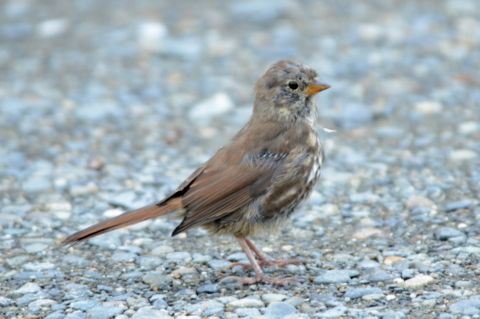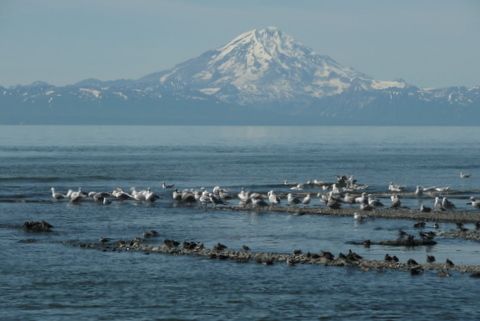Comparing the birds of Alaska with the birds of Ohio
Columnist Bruce Glick writes about the birds, especially those found locally here in our art of Ohio. See the Gone Birding column for the latest update.
Comparing the birds of Alaska with the birds of Ohio
Since we returned home on August 13, several people have asked me what my favorite bird was in Alaska, while others wondered how different the birds were from what we were used to here at home. Ill try to answer those questions, at least give them a shot.
Definitely on my list of favorite birds were the three Long-tailed Jaegers soaring over their nesting grounds in the mountains near Denali National Park. It is interesting that a number of birds that we think of as pelagic, or ocean birds, actually nest far inland, often on the tundra or high in the mountains. When the nesting season is over, these birds return to the ocean for the rest of the year.
Here in Ohio, Long-tailed Jaegers are very rare visitors along Lake Erie, most likely seen late in the summer or early fall. Ive never been fortunate to see one here. Immature jaegers are also hard to identify even when the observers get a good look.
One of the differences in Alaska is the smaller number of different species of birds that nest there. I should qualify that to say that it is true in the parts of Alaska that we visited. If one travels to the northern slopes of Alaska, there are many birds that nest only far up in the Arctic, especially shorebirds. I saw few shorebirds and most of those were later in our visit when the birds were already beginning to migrate south again.
However, the birds that we did see tended to be very common. For example, on a typical morning we could almost count on hearing and seeing Common Redpoll, Pine Siskin, Alder Flycatcher, Black-billed Magpie, Orange-crowned, Wilsons, Yellow and Yellow-rumped Warblers, Common Ravens, Black-capped Chickadee, and a variety of thrushes including Varied, Swainsons and Hermit, plus the ever-present American Robins. Fox and Lincolns Sparrows were regulars, and depending where we were, lots of White-crowned, White-throated or Golden-crowned Sparrows enriched our days.
If we were near the many bays or inlets of the ocean, the list included Northwestern Crow and the typical gulls; Mew, Glaucous-winged, Herring and Black-legged Kittiwake. Arctic Terns were also quite common. A variety of ducks were regulars, including American Wigeon, Mallard, Barrows Goldeneye and others. Offshore we usually saw the typical ocean birds such as Common Muerre, Pigeon Guillemot, Marbled Murrelet and Pelagic Cormorants.
On a normal day in Alaska my list of birds would be anywhere from 10 to 30 species, only rarely surpassing that in some of the best birding areas. By way of comparison, yesterday I biked from Millersburg to Fredericksburg and back, and even though it is late August and few birds are singing, my list of birds for the day was 45.We have a lot of diversity here in our part of Ohio and I appreciate that in a new way.
Fall is fast approaching and that means lots of migrating birds coming through Ohio. Good birding!
Bruce Glick
birderbruce@yahoo.com
330-317-7798




